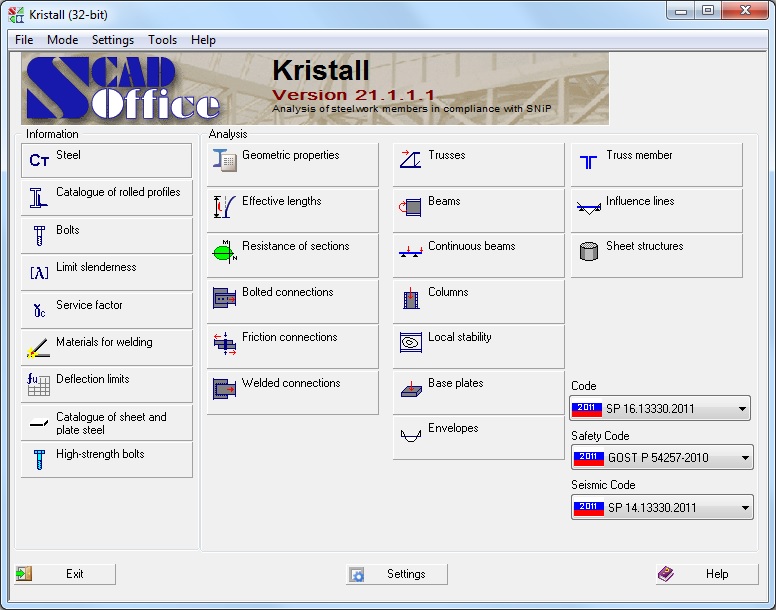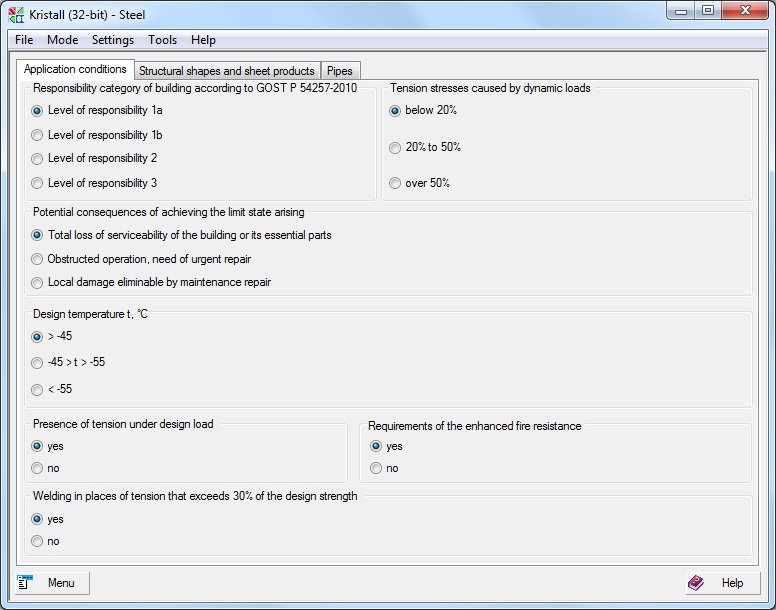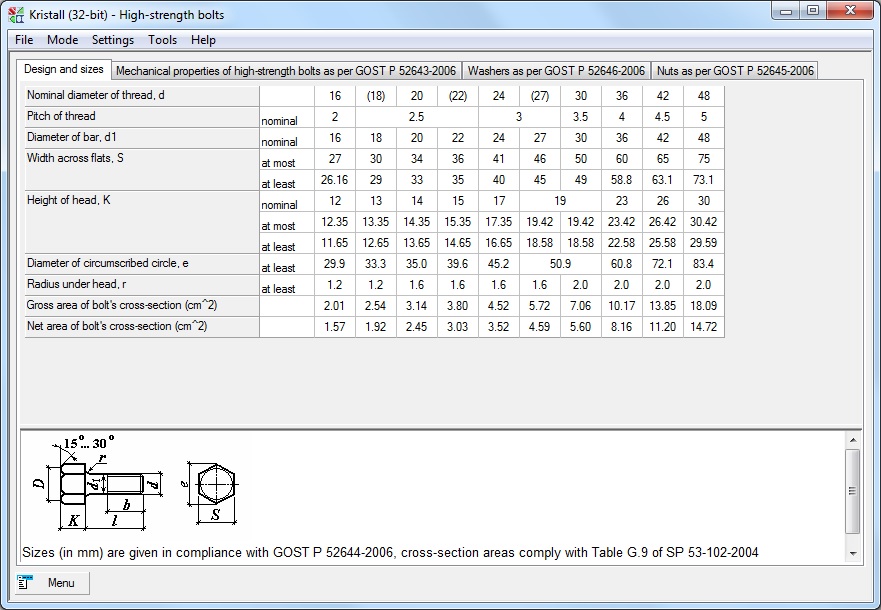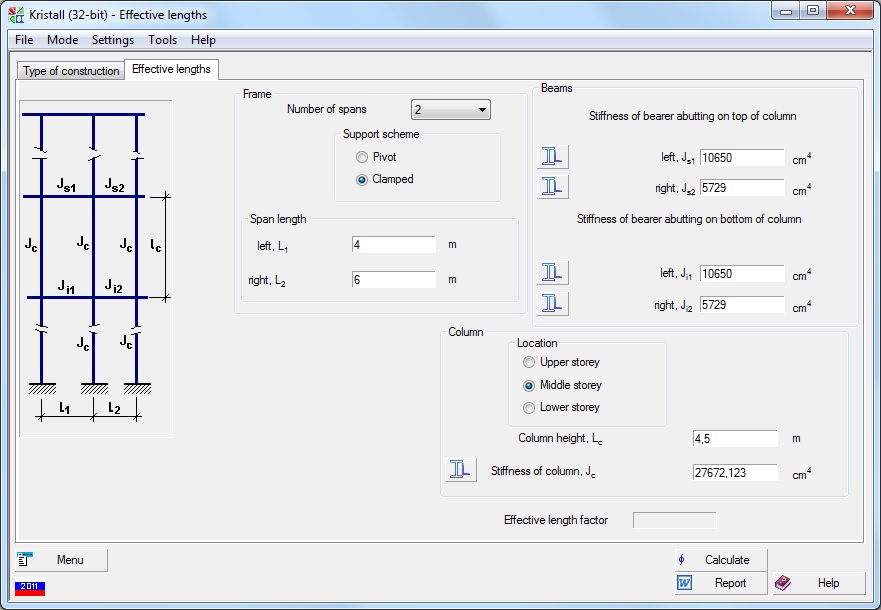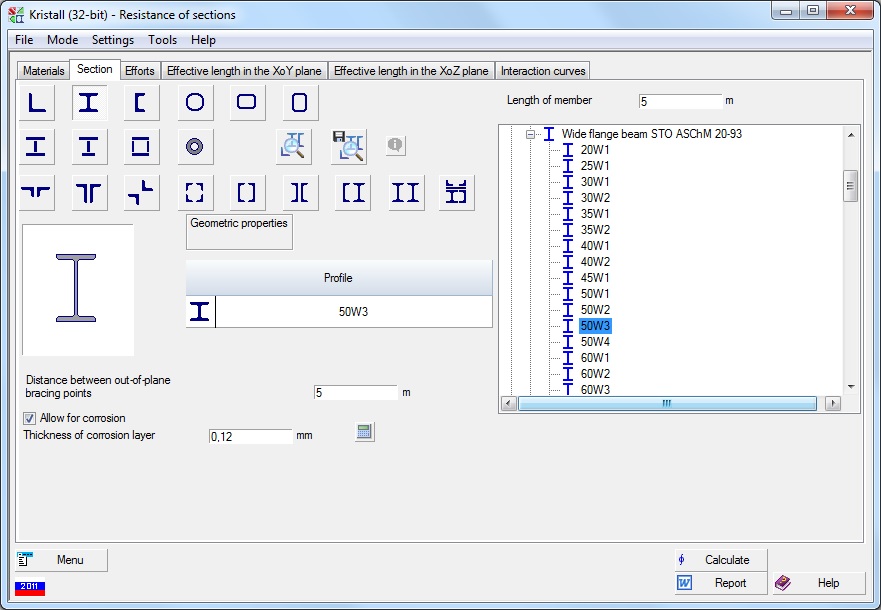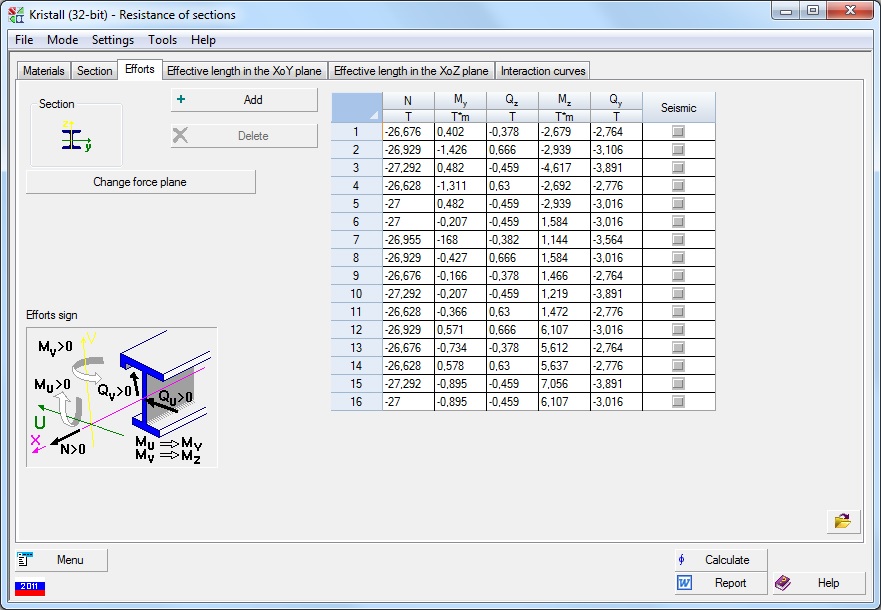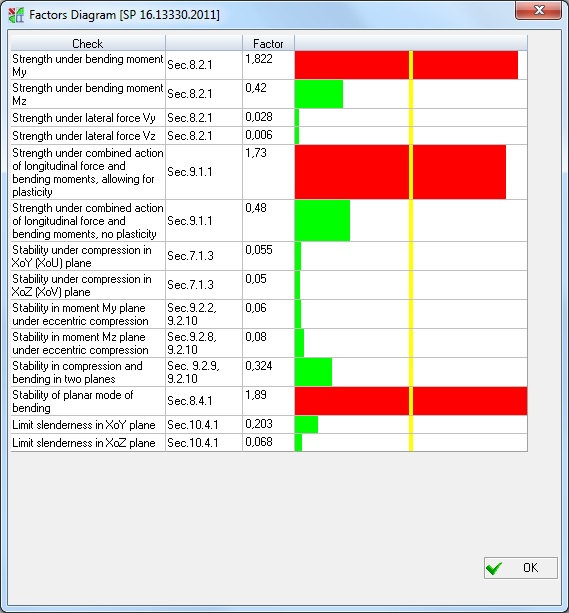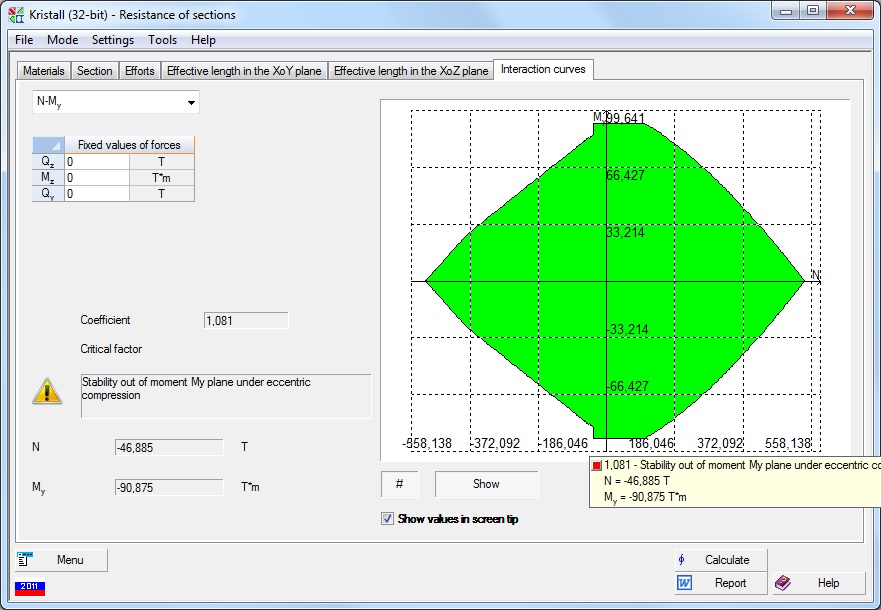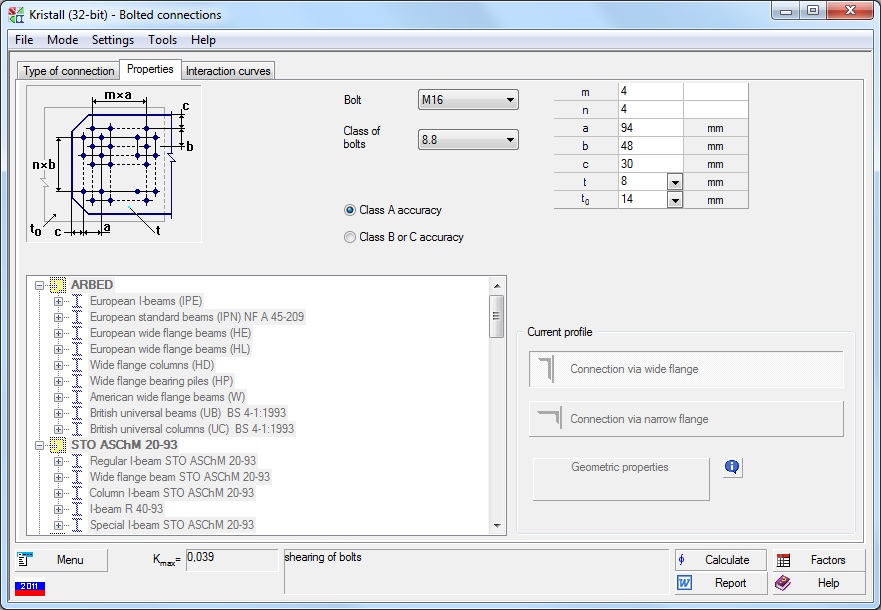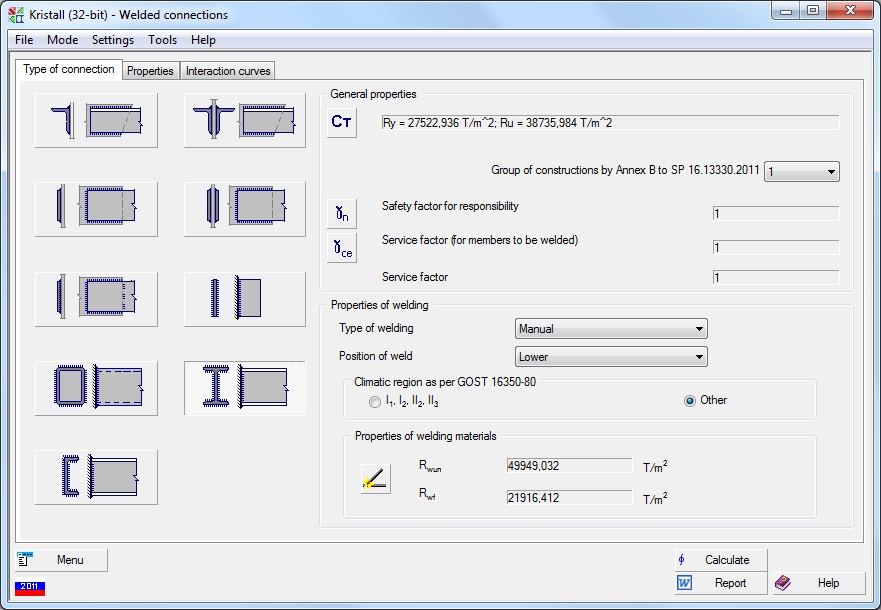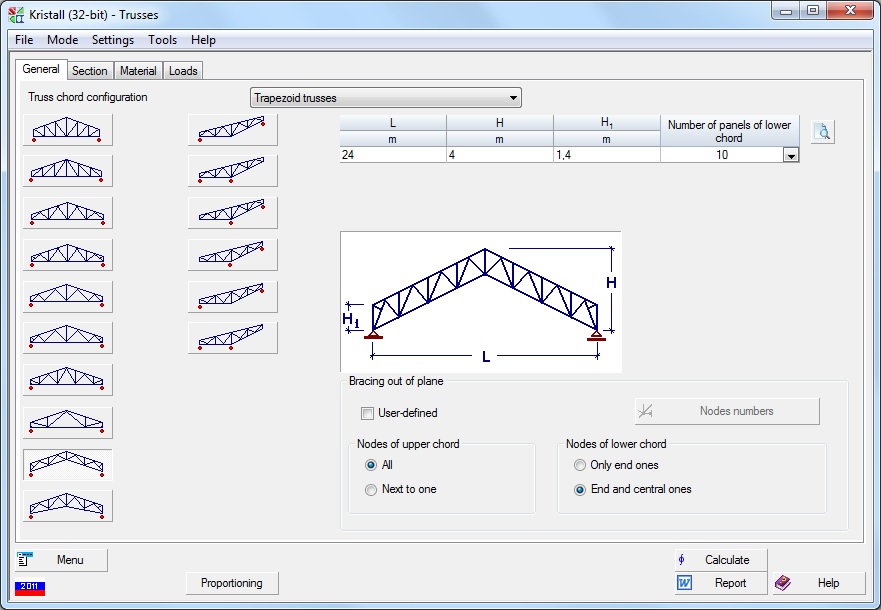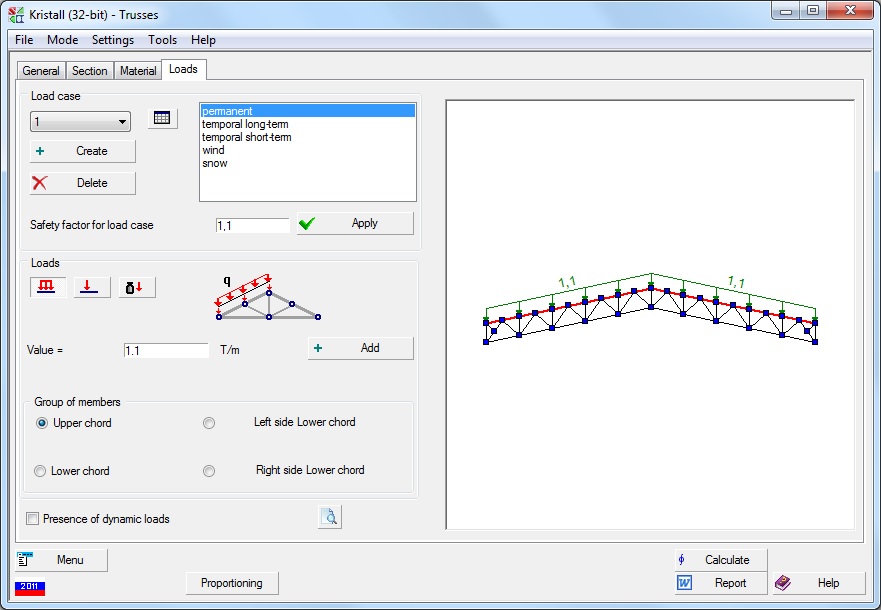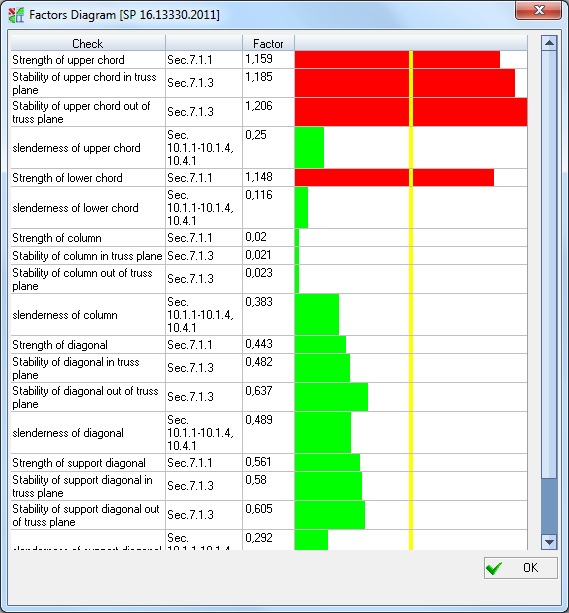Kristall enables you to perform checks of members and joints of steel structures for compliance with requirements of SNiP ІІ-23-81* “Steel Structures. Design Codes”, ShNK 2.03.05-13 “Steel Structures. Design Codes”, SP 53-102-2004 “General Rules on the Design of Steel Structures”, SP 16.13330 revised and updated edition of SNiP II-23-81* “Steel Structures”, DBN B.2.6-163:2010 and DBN B.2.6-198:2014 “Steel Structures”, ShNK 2.03.05-13, STR 2.05.08:2005 and EEN 1993. Moreover, state standards related to SNiP, SP and DBN, “Manual on Design of Steel Structures (to SNiP II-23-81*)/ Kucherenko CSRIBS” and some methodological positions of SNiP 53-1-96 were used when creating the software.
Capabilities
The following modes are implemented in the application:
Steel - implements recommendations of SNiP, ShNK, STR, SP and DBN on selection of steel grades. The mode also gives information on correspondence of steel grades defined by GOST 27771 to specific steel grades defined by GOST or standard specifications, and provides reference data on the mechanical properties.
Assortment of Rolled Profiles - enables to browse through steel profile assortments and provides profile properties.
Bolts - enables to browse through the assortment of bolts.
Limit Slenderness - provides recommendations from design codes for limit slenderness.
Service Factors - is used to browse and select values of service factors.
Materials for Welding - implements requirements of SNiP, ShNK, STR, SP and DBN for selection of materials for welded joints and for selection of the design strength values for welded joints.
Deflection Limits - provides tables from codes “Loads and Actions” with limitations on deflections of structural members.
Assortment of Sheet and Plate Steel - provides information on assortments of sheet and plate steel.
High-Strength Bolts - provides sizes and properties of high-strength bolts, nuts, and washers.
Envelopes - enables to determine unfavorable combinations of multiple loads acting on bending members, and to plot the envelope diagrams of moments and shear forces.
Influence Lines - enables to plot influence lines for multi-span continuous beams of constant cross-section.
Geometric Properties - enables to calculate all geometric properties of a given cross-section (including sectorial moments of inertia).
Effective Lengths - implements recommendations from SNiP, SP, DBN and Eurocode-3 on the determination of effective length factors.
Resistance of Sections - enables to determine the utilization factors of restrictions for any cross-section type available in the application database under the action of arbitrary forces; and to plot the interaction curves for any admissible combination of the pairs of forces.
Bolted Connections - enables to determine the utilization factors of restrictions for different structural designs of joints with bolts; and to plot the interaction curves for any admissible combination of the pairs of forces.
Friction Connections - this mode is similar to the previous one but works with a different set of structural designs of joints with high-strength bolts with non-controlled tightening.
Welded Connections - enables to determine the utilization factors of restrictions for different structural designs of joints with welded connections; and to plot the interaction curves for any admissible combination of the pairs of forces.
Local Stability - enables to check the local stability of webs and chord plates of bending or compression members; the mode does not consider crane beams or beams with a web reinforced by longitudinal stiffeners.
Trusses - this mode enables to perform all the necessary strength, stability and limit slenderness checks of the truss members for the most common structural designs. The design values of internal forces and their combinations caused by the given vertical external loads are determined. It is possible to find the cross-section.
Truss Member - this mode enables to perform all the necessary strength and stability checks for a separate bar element which is a member of a truss structure. It is possible to find the cross-section.
Beams - this mode is similar to the previous one, but it deals with welded and rolled beams with various boundary conditions.
Columns - this mode is similar to the previous one, but it deals with columns or posts of various cross-sections.
Base Plates - this mode deals with parts of a column base plate with various types of bearing.
Continuous Beams - this mode is similar to the Beams mode, but in application to a multi-span structure (up to five spans are allowed) which can have cantilevers at its ends.
Sheet Structures - this mode enables to determine the utilization factors of restrictions for strength and stability of sheet structures of one of three types: round cylindrical or conical shells, or cylindrical panels.
User-friendly interface
The application works in the Windows operating environment. All the windows, dialog boxes and controls are fully consistent with this environment.
Documenting your work
The results of the calculations can be output in an illustrated report, which is generated automatically and loaded into a Windows application associated with the RTF format (for example, Word).
Help (Reference information)
The application is provided with a detailed help which includes descriptions of the user interface and conventions of using the application.

